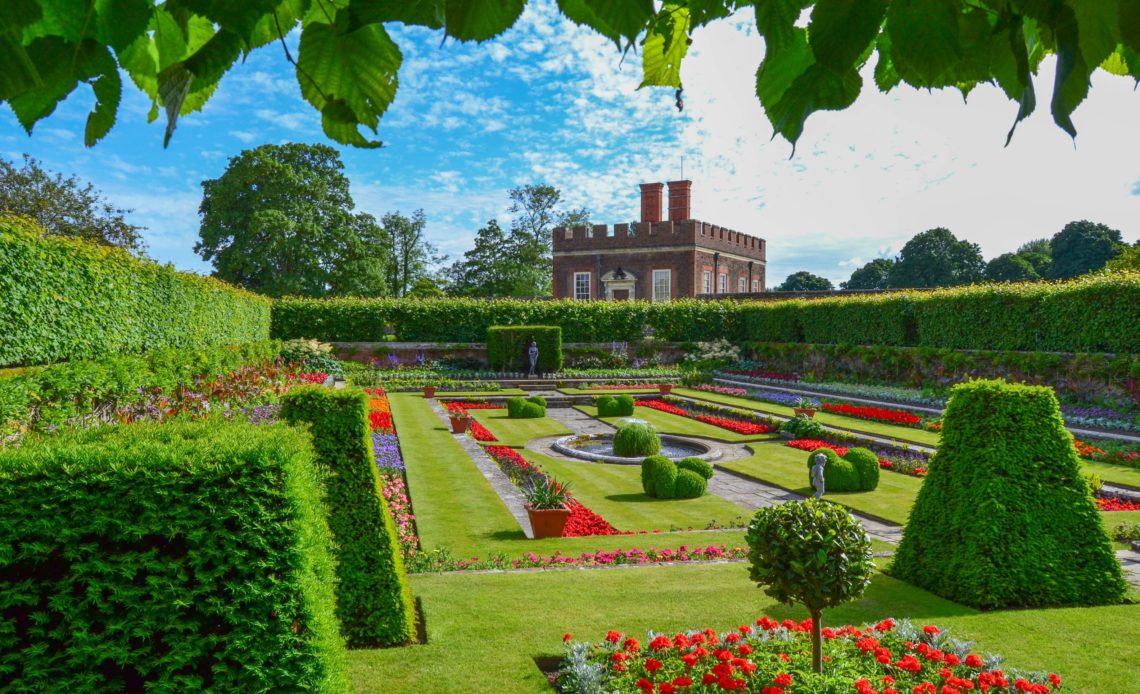
Sixteenth century kings, even those that had worked their way through a quintet of queens, had a somewhat preconceived idea of what a consort should bring to their royal marriage. Henry VIII might well have been in love with the idea of love but he also had a concept of court politics that his wives had to match. However, his final wedding would prove to be the most unusual of all his marriages and the one that came closest to bucking the wedding trend the king had established for himself.
Twice, Henry had wed foreign born princesses who brought useful political alliances as well as dowries with them. Catherine of Aragon had made her young husband look far more royal while even Anne of Cleves’ brief tenure brought some diplomatic advantage. Anne Boleyn had a been a power player who achieved political success at Henry’s side while also allying him with one of the most important families in England. Catherine Howard came from the same dynasty. Jane Seymour hadn’t just been an antidote to the ambitious Anne, she was part of another court faction who Henry could conveniently raise to stamp his power once more on his kingdom. And all had been thought of as fertile.
Katherine Parr had none of that. She was the daughter of a relatively lowly noble couple who had married relatively lowly nobles herself and ended up at Henry’s court in the early months of 1543 following her second widowhood. She had had no children in either marriage and no pregnancies were even rumoured for her. Once at court, she had entered into a flirtation with Thomas Seymour, brother of Jane. But suddenly, within weeks, the king became interested in her. By July 1543, probably less than six months after the death of her second husband, Katherine Parr was Queen of England.
It was a meteoric rise and one that continued after her marriage. In 1544, Henry named her as regent of England when he went to France for a final foreign policy hurrah. This was a rare move. The king had passed his power to Catherine of Aragon early on in his reign but none of his other queens had been named regent. Katherine Parr acquitted herself admirably. She assembled a regency council filled with members favourable to herself who supported her as she managed the kingdom’s money and diplomatic relations. Henry was impressed with her tenure.
She was also instrumental in reconciling him to his two daughters. Mary, only child of Catherine of Aragon, and Elizabeth, daughter of Anne Boleyn, had been discarded as heirs by their father when he had finished with their mothers. Under Katherine’s care, they were restored to the succession while the queen consort’s actions began to influence their own concept of female power.
In fact, Katherine became so powerful that she attracted a range of important enemies who focused on her devotion to the new Protestant religion as a reason to unseat her. They came close to persuading the king to remove her but Katherine Parr found out about the plot and sweet talked Henry into calling off her arrest. When guards arrived to detain her, they found the king and queen chatting happily with the monarch raging at them to depart and not return. However, Katherine’s power dimmed after that and she was excluded from the council appointed to rule for her young stepson, Edward VI, on Henry’s death. It was perhaps another indication of how important and influential she had been that the first actions of those who sought to control Edward were moves to exclude her.
Yet just four years earlier, Katherine had been an obscure widow of an obscure lord from an obscure family. Her spectacular rise was attributed for centuries to her ability to wipe down ulcers as the somewhat sexist history of earlier times wrote her into the Tudor tale as a nursemaid to an ailing king. Quite why the most powerful man in the country would have to marry someone to get his legs cleaned remains a mystery. As does much of Katherine’s political influence, whittled from the record in the ruthless Tudor control of their own PR.
Bizarrely, that image of her continues to hold water to this day even though the most minimal of scrapes below the surface of this interpretation reveals a far more splendid story. It also shows a return to form for the king. In his early years, Henry had been greatly influenced by his maternal grandfather, King Edward IV, who had reshaped the image of kingship. Edward had chosen his own wife against his advisers’ wishes and, in some ways, it seems Henry had returned to following those footsteps in his final years. Katherine Parr was very much his own pick and, like Elizabeth Woodville before her, a far better match to the active role of consort than many of the princesses put out as typical choices.
She didn’t fit any bill other than the ambitious, politically motivated one of the Tudor dynasty. Katherine herself more than rose to the role she unexpectedly found falling to her in 1543 and seems to have revelled in her royal status. She was very good at being queen even if she was, perhaps, the most unusual of all the choices that Henry VIII made in marriage.

